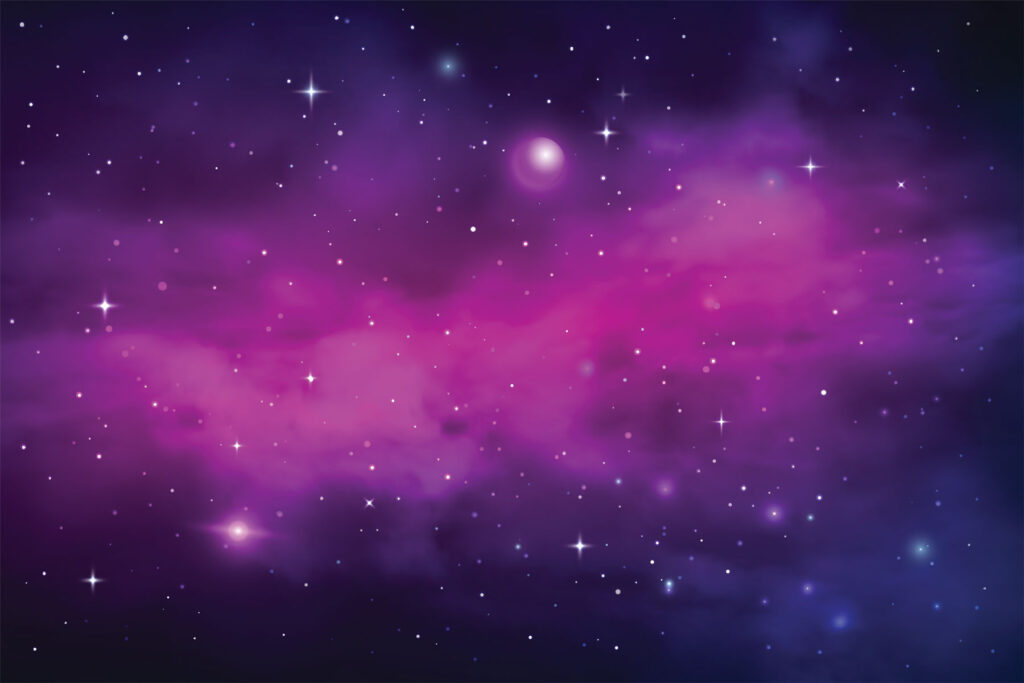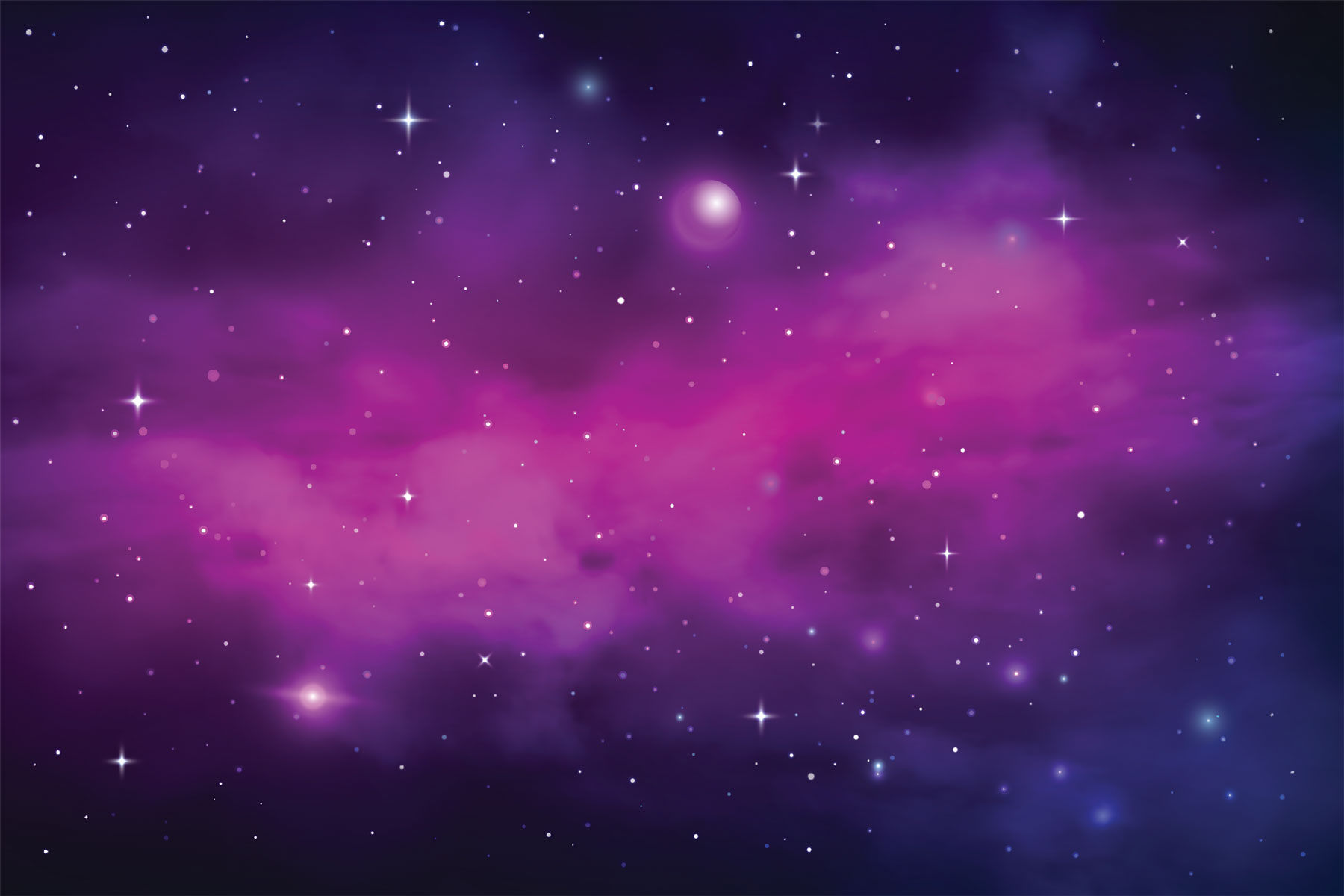Look Up in 2022
By Avery Walker

2021 was a hard year for many people, but 2022 promises to be a year for looking up. Here are ten celestial events happening this year that you will not want to miss.
January 3-4: The Quadrantids Meteor Shower
The new year starts off with a bang as the night skies are filled with nature’s own fireworks display. The Quadrantids are one of the larger meteor shows each year, and the timing of this year’s shower sets the stage for optimal viewing. The shower will happen during the crescent phase of the moon, which will set early in the evening, leaving the skies dark and the conditions perfect for viewing meteors. The Quadrantids are believed to have originated from the minor planet 2003EH₁ that may be related to a comet viewed 500 years ago by astronomers across eastern Asia. Look towards the big dipper just after midnight to view this event but be aware – this meteor shower is one of the quickest and will last only a few hours.
April 21-23: The Lyrids Meteor Shower
The Lyrids, although not as prolific as some of the other meteor showers, are a unique experience for several reasons. Thought to be one of the oldest meteor showers ever recorded, ancient texts from over 2,500 years ago mention this celestial event. The Lyrids are debris from a comet that only passes by our planet once every 415 years, with the last pass having been documented in 1861. The Lyrids are known for occasionally producing super bright fireballs that can leave dust trails that will remain visible for minutes. Although some meteors can be seen between April 16-25, it will be most active around the 22nd this year.
May 6-7: Eta Aquarids Meteor Shower
Several of this year’s meteor showers align with the correct phases of the moon for perfect viewing, and the Eta Aquarids are no exception. One of the longest running meteor showers each year, meteors can be seen beginning in late April and continuing into the second week of May. The best time to see them this year will be in the early morning hours between May 6th and 7th. The Eta Aquarids are debris from the well-known comet Halley, which is one of the oldest documented comets, and the only comet that can pass by the earth twice in one lifetime. With the last viewing in 1986, Halley is set to return in 2061. Until then, we can enjoy the fiery “shooting stars” it left behind hundreds of years ago.
May 15: Total Lunar Eclipse
You will not want to miss this total eclipse of the moon, or “Blood Moon,” happening at optimal timing and positioning for our part of the hemisphere. Beginning around 8:30pm on the night of May 15th, the eclipse will reach its zenith just after 11:00pm EST. This eclipse is made extra special by the fact that the moon will be in closer proximity to the earth, resulting in supermoons the following three months.
June 14, July 13, and August 12: Supermoons
Also known as the “Strawberry Moon,” June’s full moon will be the first of three supermoons in 2022. The name for this moon stems from Native American tradition and designates the end of spring and the beginning of summer: the ideal time for harvesting strawberries.The second of this year’s supermoons, the July moon, was designated the “Buck Moon” for the fact that it coincides with the time of year that young male deer begin growing their antlers.The last supermoon of the year falls in August and was traditionally known as the “Sturgeon Moon.” Native Americans had extra success fishing for sturgeon this time of year in the Great Lakes and other large bodies of water.
August 14: Saturn
Although often visible in the night sky as a brighter spot than most stars, this year, Saturn will be at its closest to earth and at full illumination on August 14th. This happens when Saturn is on the exact opposite side of the earth from the sun. If you have access to a telescope, this will be the night to use it. During this viewing will be one of the best times to see Saturn’s moons and also its rings, which will become increasingly harder to see in the coming years.
September 26: Jupiter
September is Jupiter’s time to shine in the night sky, as it comes in closest orbit to the earth and opposite the sun. Like Saturn, it will merely appear as a brighter-than-normal star to the naked eye, but even a good pair of binoculars will make this viewing extra special by revealing Jupiter’s moon system. Look toward the constellation Pisces and you will not be able to miss it.
December 13-14: The Geminids Meteor Shower
The year will go out the same way it came in: with a spectacular light show in the night sky. Taking its name from the constellation Gemini where the shower radiates from, the Geminids are often referred to as the “King of the Meteor Showers.” Averaging up to 120 meteors per hour at its peak, it outshines all other meteor displays of the year. Originating from the asteroid 3200 Phaethon, it is one of the only meteor showers not caused by a comet. Plan to stay up past midnight to see the shower at its peak.
Whether you are a casual observer or a serious astronomer, these events are sure to make your 2022 brighter. Celestial events are great learning opportunities for kids and adults alike. Take a blanket out away from the city lights and lose yourself in the night sky or plan a trip to one of North Carolina’s astronomical observatories. Let the wonder of the stars remind you that there is beauty to be found all around us…if we just keep looking up.

